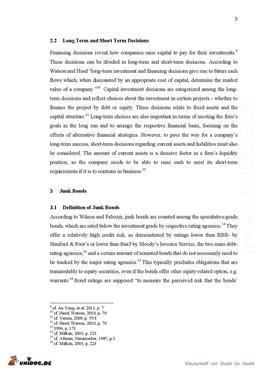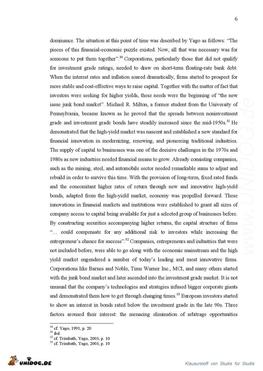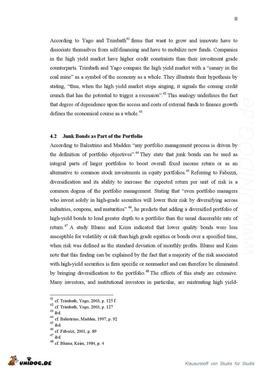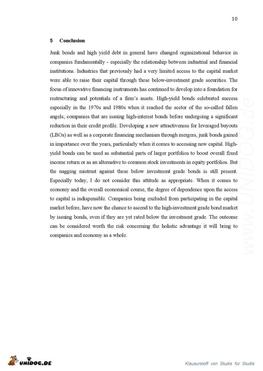|
Inhalt / Beschreibung
Companies in the United States and elsewhere are increasingly turning towards the bond markets as a predominant source of corporate finance referring to changing market conditions. Various reasons such as merger and acquisition activities, capital expenditures, or working capital needs, have contributed to the fact that corporate entities have always needed funds. Nelson Peltz, who transformed Triangle Industries in one of the largest and most successful high yield companies, summarizes: “the thing about capital is, if you don’t inherit it, you have to borrow it.” During the decades, high-yield bonds have survived a dramatic rise and fall in popularity and heated controversy to the limit. The leveraged finance market as a segment of the general credit market, involves issuers, usually considered more risky and with a lower credit ranking than its counterparts, as well as investors, expecting a higher rate on return potential. Investors are attracted to many forms of bonds, but one threat, concerning all leveraged finance investors is that they all have a comparatively high return objective. Many analysts still hold back from the analyst of junk bonds, which can be a result of the bond’s rating that is below the investment grade and therefore known as having very high investment risks. However, the potential rewards of this specific field of credit analysis are worth the time invested. A new emission volume has been pushed by debt financing activities and maintained by high investor demands, looking for yield in the consisting low interest rate environments.
|










